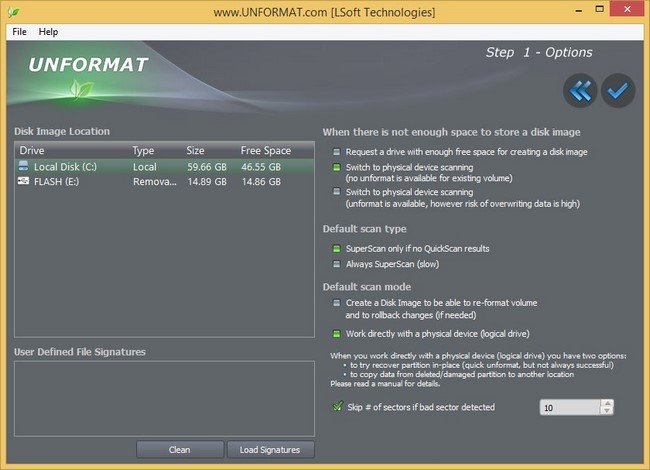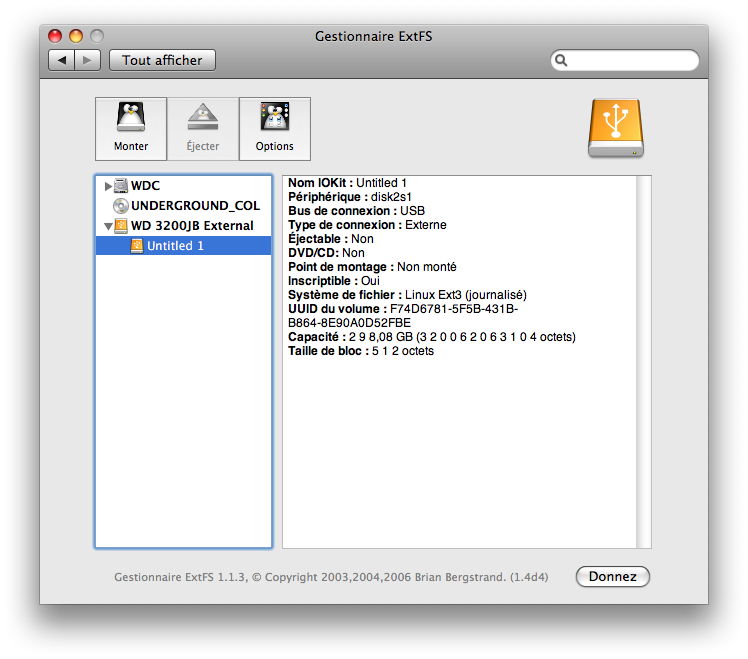

- #MAC EXTFS MOUNT HOW TO#
- #MAC EXTFS MOUNT INSTALL#
- #MAC EXTFS MOUNT SOFTWARE#
- #MAC EXTFS MOUNT TRIAL#
I'm trying to mount the disk to just rescue my files.
#MAC EXTFS MOUNT HOW TO#
Refer to the article: How to access Linux partitions on Windows? For more details.I have a NAS that died, but when I connect the hard drive to my Mac it appear to work fine. Due to the enhancement of Linux integration into Windows, this has finally been changed.
#MAC EXTFS MOUNT SOFTWARE#
Currently, companies like Paragon Software and the open source community are actively offering solutions to this problem.Įxt4 is also not fully supported on Windows at the present time. Since Apple is still busy focusing on its own technologies, users do not expect change in this issue in the near future. If you want to buy software, it is available for $ 39.95 (920,000VND).Īlthough reading Ext4 format on macOS is no longer an impossible task, it is frustrating when Apple does not support this format.
#MAC EXTFS MOUNT TRIAL#
Paragon Software offers a free trial version, but to be safe, you should back up your hard drive first, in case there is a problem. The article has not yet tested this software, so it is not certain whether it works as well as what it has promised.

The company even said that their software can fix Ext4 and other file systems. This company offers ExtFS software, which is guaranteed to be safe and fast, for Mac. If you really need read / write access and are willing to pay a fee, Paragon Software may have a suitable option for you. Just make sure to use different directory names to mount them. If your drive has multiple partitions, you can mount them using the same steps as above.

Now, navigate to the '/ tmp /' directory in the Finder and you will see the contents of the partition listed. MY_DISK above can be any name you choose. Then, run the following command to mount the hard drive: sudo ext4fuse /dev/disk3s1 ~/tmp/MY_DISK_PARTITION -o allow_other Save the partition ID (will look like ' / dev / disk3s1 '). To do this, run the following command: diskutil list Mount Ext4 drive on macOSĪfter installing the Ext4 support software, you now need to determine the hard drive you want to mount. Instead, use another file system like ExFAT or try the commercial option listed below. If you need to move files back and forth on a shared drive with Linux, this method is not recommended. If you try to use these tools to write to an Ext4 drive, you may lose data. As long as you are mounting read-only drives, as what is being done in this tutorial, you will not have much risk.
#MAC EXTFS MOUNT INSTALL#
If you need help installing Homebrew, follow 's instructions in: Instructions for installing software with Homebrew on macOS X or How to use Homebrew to install software on Linux and Windows.Īfter Homebrew is installed (or if it is already installed), run the following command: brew cask install osxfuse brew install ext4fuseĪlthough these tools can help you read Ext4 formatted hard drives, they are not stable. The easiest way to install them is to use Homebrew. You need to install some software, namely osxfuse and ext4fuse. If you regularly use Ext4 formatted drives and / or need to copy multiple files from there to the macOS drive, you need a better option. Installing VirtualBox is quite simple and if you have an Ext4 formatted hard drive, you may be familiar with installing Linux. Just install the Ubuntu version or any Linux distribution you choose, in a virtual machine like VirtualBox, then mount the hard drive like any other device and read it. If you only need to read a few files and don't want to choose a more permanent solution, there is an easy method. Fortunately, there are several ways to handle this situation. If you plug in a hard drive, Mac won't recognize it. When you need to access the data from that Ext4 file system on another operating system, everything is really starting.įor example, Mac does not support Ext4 file system. Assuming you only work with Linux, that's not the problem. If you work with Linux, you may have one or two formatted hard drives with Ext4 or a related file system.


 0 kommentar(er)
0 kommentar(er)
